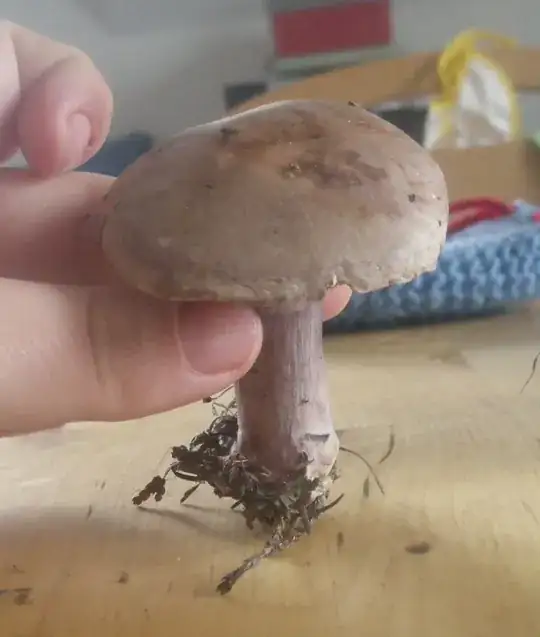My grandma is a great fan of mushrooms and knows quite a lot about them. About 10 years ago, she started throwing out mushroom remnants in one special place, in order to grow her own mushrooms. In fact, during last three years we found some parasol mushrooms (Macrolepiota procera).
Today she found something, that nobody at home can classify. From what I searched, it might be Cortinarius privignoides, but it is marked as almost extinct here in Poland, so I doubt this classification.
I found one more candidate: Cortinarius traganus, but one thing is not right - the ones that I have don't have any special smell (just faint generic mushroomy smell) and gassy webcap should smell and taste bad. Grandma threw a lot of Cortinarius caperatus bits there, so I would expect to see this one, but what we have is very different. Maybe you have seen this or know what it really is:

The hat is light brown with faint violet shades, the leg on the outside is partly violet too, but the inside is all whitish.
Some more photos:
The gills are lighter brown, almost creamy, also with a violet tone